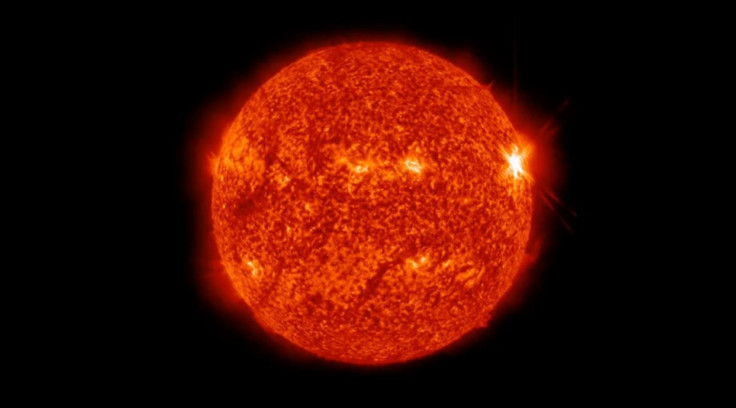Solar Flare Satellite Reveals New Information on Phenomenon

Thanks to NASA's Solar Dynamics Observatory, or SDO, scientists are finding out more information than ever about solar flares.
Solar Flares are when the sun gives off a burst of radiation from the release of magnetic energy. They are an incredible force, the solar system's largest explosive event, which can impact the Earth's satellites as well as the atmosphere. Thanks to the work of the SDO satellite and its scientific instruments, researchers have found out new information on the phenomenon.
For instance, the scientists have observed that radiation from solar flares continue for up to five hours beyond the main phase. Furthermore, the SDO satellite has revealed that total energy from this extended phase of the solar flare's peak sometimes has more energy than the initial event.
Previous observations considered a few seconds or minutes to be the normal part of the flare process. This new data will increase our understanding of flare physics and the consequences in near-Earth space where many scientific and commercial satellites reside, said Lika Guhathakurta, lead program scientist for NASA's Living with a Star Program.
In 2010, the SDO analyzed 191 solar flares and came up with a name for the pattern: the late phase flare. According to the research, 15 percent of the flares have a distinct late phase flare some minutes to hours later that has never before been fully observed.
One flare, on Nov. 3, 2010, is a perfect example of the SDO's prowess. Had the scientists only measured the effects of the flare as it initially happened, they would have underestimated the amount of energy shooting into Earth's atmosphere by 70 percent.
We see a large increase in emissions a half-hour to several hours later, that is sometimes even larger than the original, traditional phases of the flare, Phil Chamberlin, deputy project scientist for SDO at NASA's Goddard Space Flight Center in Greenbelt, Md. said in a statement.
The SDO satellite used two instruments in particular: the Extreme ultraviolet Variability Experiment (EVE) Advanced Imaging Assembly (AIA). EVE mapped the wavelength of light as it strengthened, peaked, and diminished over time. With the ability to record data every 10 seconds, EVE recorded many solar flares. To compliment EVE, scientists used AIA to map images of the solar flares.
On top of a better understanding of a solar flare after it happens, the scientists say the new research will help them predict the solar flares before they even begin. The scientists are also looking at how the late phase solar flares can affect space weather including communication and navigation systems, satellite drag and the decay of orbital debris.
The SDO launched in February of this year. It is the most advanced spacecraft ever designed to study the sun and its behavior. NASA says it provides an image that is 10 times clearer than high definition television and more comprehensive science data faster than any solar observing spacecraft in history.
Follow Gabriel Perna on Twitter at @GabrielSPerna
© Copyright IBTimes 2024. All rights reserved.





















